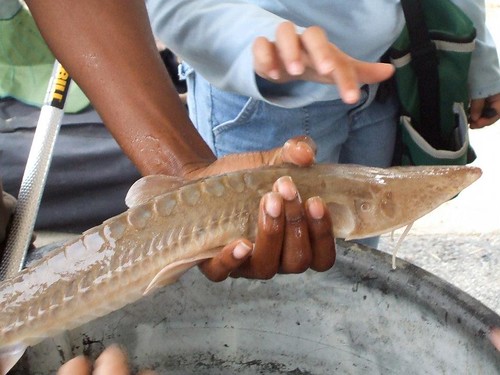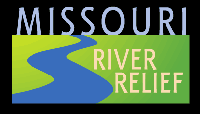Washington Riverside Experience
Rennick Riverfront Park, Washington, MO
Oct. 12-13, 2011
text by Colby Wrasse, US Fish & Wildlife Service
(blogger's note: Colby is a biologist with the Columbia Fish & Wildlife Conservation Office. He's helped at many of our clean-ups and education events. During our week at Washington, MO, during the Big Muddy Clean Sweep, Colby and Brian Peoples set up a live fish booth, showing students what kind of critters live in the Missouri River. This article is reprinted from the CFWCO newsletter)
River towns along the lower Missouri River are nearly as endangered as the pallid sturgeon that swim nearby. Sure the towns still exist, but most can no longer be considered “river towns” as their connection with the river is a shadow of what it once was. The heart of many towns moved from the banks of the Missouri River, as commercial barge traffic never materialized and the constant threat of flooding caused most people and businesses to seek higher ground.
Many people I talk to have lived their entire lives within a few miles of the Missouri River, but have never taken a boat ride on the river, never wet a line for catfish, or never even skipped a rock into those murky waters.
 |
| Tim Nigh and Jodi Pfefferkorn of Missouri River Relief show Washington, MO students how a river cleanup is done. photo by Melanie Cheney |
Missouri River Relief (MRR) has played a large role in this Missouri River renaissance. We at Columbia FWCO have been fortunate enough to assist MRR as they travel up and down the river educating people and raising awareness about the Missouri River.
During October, Colby Wrasse and Brian Peoples of Columbia FWCO took part in a MRR education event for 4th-6th grade students from Washington, Missouri. For our part of the event, we displayed live Missouri River fish species for the children to marvel at.
 |
| When it comes to hands-on education, you can't beat touching a sturgeon. Photo by Gloria Bauermeister. |
 |
| Colby Wrasse shows off a longnosed gar to students from Washington, MO. photo by Melanie Cheney |
In fact, of all the towns we visit along the lower Missouri River, Washington has perhaps the strongest connection to the river. The old downtown section which borders the river is vibrant, with numerous restaurants and shops, and many people gather daily at Riverfront Park to boat, fish, picnic, or just socialize.
We at Columbia FWCO, and groups like Missouri River Relief, continue to raise awareness about the Missouri River in hopes that more communities will do as Washington, MO has done, and embrace the Missouri River rather than turn away from it.
